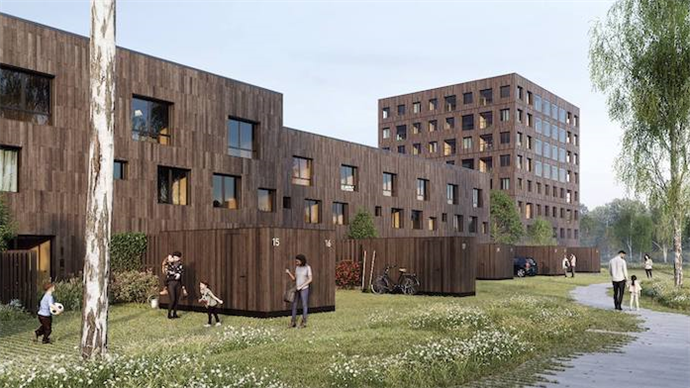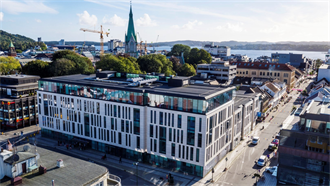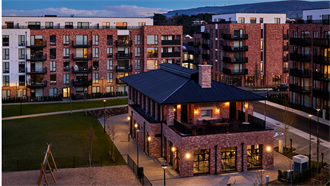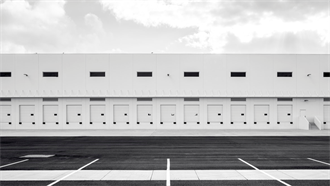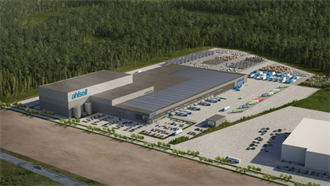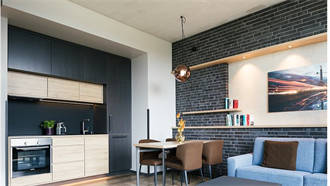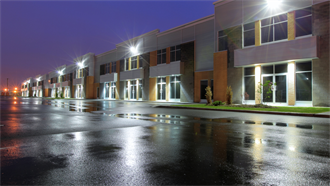The Holland Metropole group, an alliance between the five big Dutch cities and a number of leading developers and investors, is focusing attention on climate adaptation and the use of timber in construction at this year’s Expo Real.
The recent floods in the Netherlands, Germany and Belgium brought home just how important it is to tackle climate change, adapt to it and to deal with excess water caused by increasingly heavy rainfall, the Holland Metropole members say.
Amsterdam, for example, has introduced ‘rainproof’ standards for new buildings, which includes agreements on water storage and irrigation for roof gardens, while Eindhoven is bringing an underground river, the Gender, back to the surface to absorb rain water. Rotterdam, meanwhile, has set up a programme to make 18 square kilometres of the city’s roofs multifunctional, ranging from planting and water storage to developing play areas and energy generation.
Given around 25% of the Netherlands is below sea level, dealing with excess water is crucial. ‘We integrate climate adaptation into the area, not at the level of individual buildings. Water, for example, is not a threat but an opportunity to devise and realise distinctive environments with the ability to capture and buffer water,’ said Ronald Huikeshoven, chief executive of developer AM, ahead of Expo Real. For example, at AM’s Bajeskwartier project, which involves converting a former Amsterdam prison complex into a mixed-use location, rainwater collection and storage is integrated into the overall design.
Developers are also drawing up their own standards and in some cases going further than official regulations. ‘Our own company building code is tougher than current rules in the Netherlands. We use infiltration systems to keep water at the location and maintain ground water levels… we are using fewer tiles and more greenery in gardens and putting climate neutral roof gardens on apartment complexes,’ said Onno Dwars, chief executive of Ballast Nedam Development.
The Netherlands has drawn up a list of targets for reducing greenhouse gases and eradicating natural gas as a source for heating and cooking in homes. On a national basis, the government has pledged to cut greenhouse gas emissions by 49% in 2030 compared with 1990, but Amsterdam, for example, has set a target of 55%.
The use of timber in buildings is also a growing trend. Amsterdam, for example, is committed to ensuring 20% of new residential housing is timber-based within the next few years.
‘Awareness has grown across everyone involved in the real estate and development sector that building with timber on a large scale is essential if we want to meet the terms of the Paris climate agreement and speed up the supply of housing,’ said Bob van der Zande, programme director Houtbouw MRA.
Timber is not only light and easy to use, but leads to quieter construction work and can work out cheaper than traditional materials. Nevertheless, it still has some way to go to become widely accepted.
‘A commitment to using wood brings challenges with it, such as finding suitable locations and making timber one of the requirements in tenders for building land. And we are continuing to stimulate and facilitate the use of wood in the market, so that it becomes more attractive,’ noted Marieke van Doorninck, Amsterdam’s environment chief.
Clients too, can be reluctant to make the switch. ‘We try to persuade our clients to go for wood, and while lots of people talk about it, they have to actually take the plunge, rather than say it is all too difficult. Of course, a building is never 100% wood, but it would be an enormous step forward if we got most of the concrete out of a building,’ said Edward Schuurmans, a partner at architects KCAP, which is pioneering the use of timber.
Experts have calculated that if the one million new homes which the Netherlands will need by 2030 are made primarily from wood rather than concrete, it would save 50 megatons in carbon dioxide emissions.
‘The built environment accounts for 40% of global carbon emissions. By using more natural construction materials instead of concrete and steel, and focusing more on circularity, the CO2 emissions driven by new construction can be minimized,’ pointed out Ingrid Hulshoff, portfolio manager real estate at investor Syntrus Achmea.
Climate protection and ESG, and the real estate industry's role and response in this area, is a major theme at this year’s Expo Real and the focus of several conference sessions.
Holland Metropole stand A2.130.

